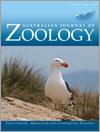The koala (Phascolarctos cinereus) is an Australian marsupial that continues to experience significant population declines. Infectious diseases caused by pathogens such as Chlamydia are proposed to have a major role. Very few species-specific immunological reagents are available, severely hindering our ability to respond to the threat of infectious diseases in the koala. In this study, we utilise data from the sequencing of the koala transcriptome to identify key immunological markers of the koala adaptive immune response and cytokines known to be important in the host response to chlamydial infection in other species. This report describes the identification and preliminary sequence analysis of (1) T lymphocyte glycoprotein markers (CD4, CD8); (2) IL-4, a marker for the Th2 response; (3) cytokines such as IL-6, IL-12 and IL-1β, that have been shown to have a role in chlamydial clearance and pathology in other hosts; and (4) the sequences for the koala immunoglobulins, IgA, IgG, IgE and IgM. These sequences will enable the development of a range of immunological reagents for understanding the koala’s innate and adaptive immune responses, while also providing a resource that will enable continued investigations into the origin and evolution of the marsupial immune system.
How to translate text using browser tools
28 April 2014
The koala immunological toolkit: sequence identification and comparison of key markers of the koala (Phascolarctos cinereus) immune response
Katrina Morris,
Peter J. Prentis,
Denis O’Meally,
Ana Pavasovic,
Alyce Taylor Brown,
Peter Timms,
Katherine Belov,
Adam Polkinghorne
ACCESS THE FULL ARTICLE

Australian Journal of Zoology
Vol. 62 • No. 3
August 2014
Vol. 62 • No. 3
August 2014




